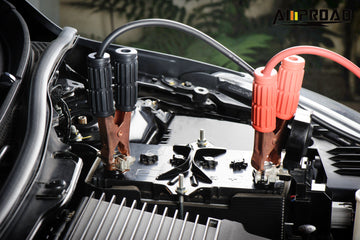Why a car can not start? Car jump starters make it more convenient to drive your car
Oct 09, 2023

Experiencing a car that won’t start is a common and frustrating issue for many drivers. Understanding the various reasons why a car might fail to start can help you diagnose and address the problem more effectively. In this article, we'll explore eight common reasons why your car might not start and explain how a portable car jump starter can make the process of getting back on the road more convenient.
1. Insufficient Battery Power
One of the most common reasons for a car not starting is a dead or weak battery. A car battery can lose power due to age, extreme temperatures, or leaving the lights on. When the battery is too low, the engine won't have the necessary power to start.
Solution: Use a car portable jump starter to charge the battery. However, before using a jump starter, inspect the battery for signs of damage or aging. If the battery is old or damaged, replace it promptly.
2. Ignition Coil Failure
The ignition coil is crucial for generating the spark that ignites the fuel in the engine. If the ignition coil fails, the engine won't start.
Solution: Check the ignition coil for signs of damage or wear. If it's faulty, replace it immediately to restore the car's starting capability.
3. Engine Fuel Supply System Failure
A malfunction in the fuel supply system can prevent the engine from receiving the fuel it needs to start. This issue could stem from problems with the fuel pump, fuel injector, or other components.
Solution: Inspect the fuel pump and injectors to ensure they are functioning correctly. Repair or replace any faulty components to restore proper fuel flow to the engine.
4. Aged or Damaged Ignition Plug
The ignition plug, or spark plug, is another critical component in the ignition system. If it is worn out or damaged, it won't be able to ignite the fuel mixture in the engine.
Solution: Regularly check and replace spark plugs as part of routine maintenance. If you suspect the spark plug is the cause of the issue, replace it to see if that resolves the starting problem.
5. Vehicle Flameout Protection Device Activation
Modern vehicles are equipped with flameout protection devices to safeguard the engine and vehicle. If this device is activated, it can prevent the engine from starting.
Solution: Refer to your vehicle's manual to understand how to reset the flameout protection device. Follow the instructions carefully to deactivate the device and attempt to start the engine again.
6. Vehicle Circuit Failure
Electrical issues within the vehicle's circuitry can also lead to starting problems. Faulty wiring, blown fuses, or damaged relays can all prevent the engine from starting.
Solution: Inspect the vehicle's electrical system for any signs of failure. Repair or replace any damaged wiring, fuses, or relays to restore proper electrical function.
7. Engine Mechanical Failure
Mechanical issues within the engine, such as a seized engine or broken timing belt, can also prevent it from starting.
Solution: Conduct a thorough inspection of the engine's mechanical components. If you identify a mechanical issue, consult with a professional mechanic to determine the best course of action for repairs or replacement.
8. Other Reasons
Several other factors could prevent your car from starting, such as a faulty key fob, depleted remote battery, or issues with the immobilizer system.
Solution: Check for less obvious issues like key fob battery life and ensure the immobilizer system is functioning correctly. Replace the key fob battery if necessary and refer to your vehicle's manual for troubleshooting immobilizer problems.
The Convenience of Car Jump Starters
When faced with a dead battery, having a car jump starter can be a lifesaver. A jump starter is a portable device that provides a surge of power to kick-start a dead battery, allowing you to start your car and get to a mechanic or parts store.
How It Works: A battery booster connects to your car's battery using alligator clips. Once connected, it delivers a powerful burst of electricity to the battery, providing enough power to start the engine. This process is quick and can be done without needing another vehicle for a jump start.
Benefits:
- Portability: Modern jump starters are compact and easy to store in your vehicle, making them convenient to carry and use anywhere.
- Safety: Many jump starters come with safety features like reverse polarity protection, ensuring that you don't damage your vehicle's electrical system.
- Versatility: In addition to jump-starting your car, many models also function as power banks for charging mobile devices, making them useful multi-purpose tools.
Recommendation: Consider investing in a high-quality portable car jump starter, like the Amproad best portable car jump starter, which offers reliability and convenience. Having a jump starter on hand can save you from being stranded with a dead battery and make it easier to maintain your car's functionality.
Ultimately, understanding the various reasons why a car might not start can help you address the issue more effectively. By identifying the problem and using tools like a portable car jump starter, you can ensure that you're prepared for common starting issues and can get back on the road quickly and safely.



